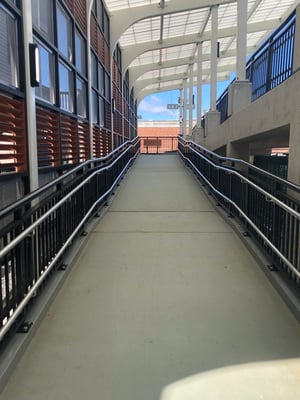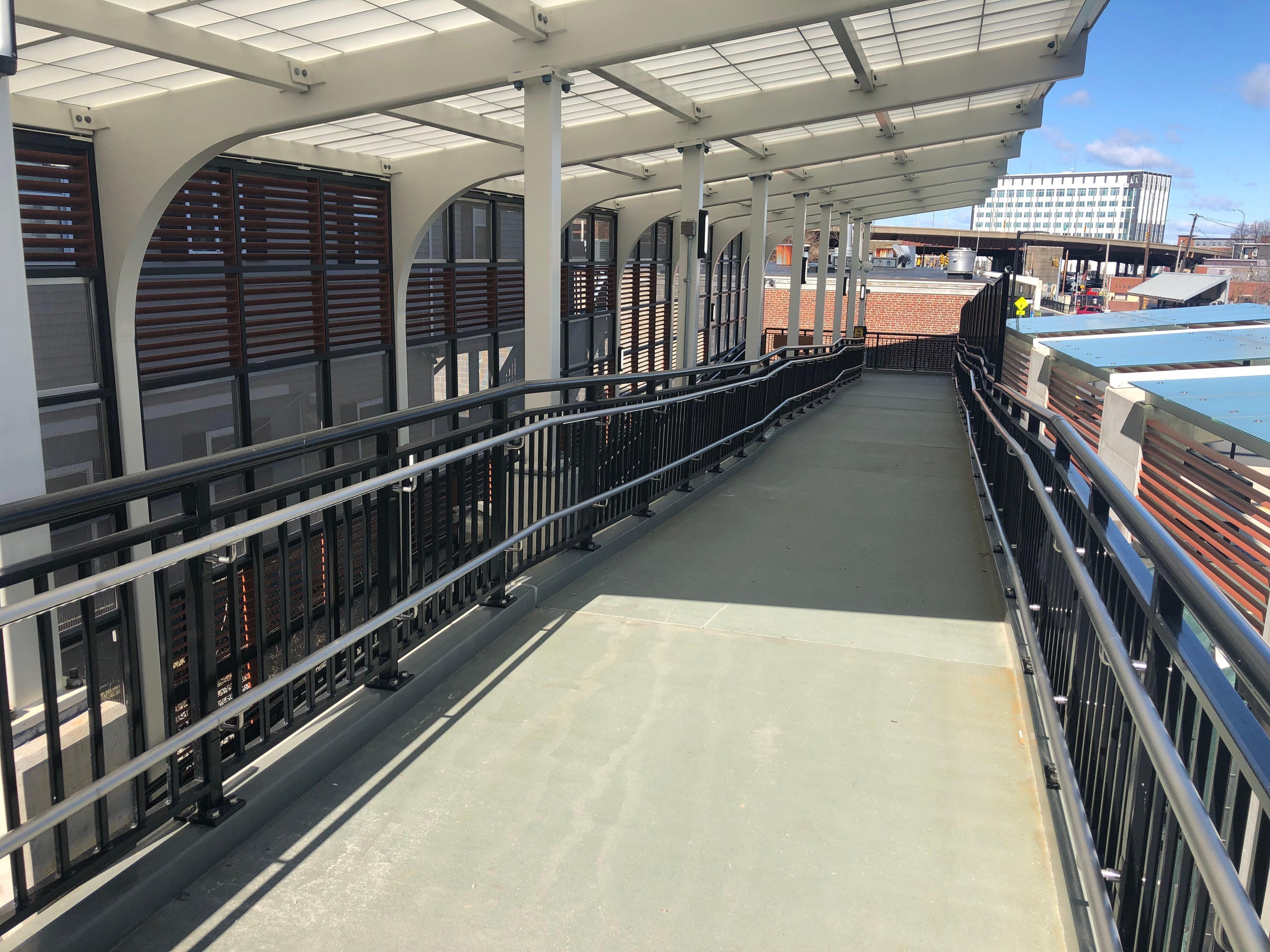 Handicap accessible features in buildings are becoming more commonplace as the Americans with Disabilities Act (ADA) continues to broaden standards to ensure that disabled persons are granted access to a wider range of facilities. As stipulated by the ADA, buildings constructed after 1992 are subject to the ‘Accessibility Guidelines for Buildings and Facilities’ section of the law. These are construction standards that outline the requirements for wheelchair and scooter accessible ramps.
Handicap accessible features in buildings are becoming more commonplace as the Americans with Disabilities Act (ADA) continues to broaden standards to ensure that disabled persons are granted access to a wider range of facilities. As stipulated by the ADA, buildings constructed after 1992 are subject to the ‘Accessibility Guidelines for Buildings and Facilities’ section of the law. These are construction standards that outline the requirements for wheelchair and scooter accessible ramps.
There are several types of ramps currently available; however, the most common types are the threshold, modular, and switchback ramps. Although these ramps all serve the same purpose, they are each suitable for different situations. Selection of the appropriate ramp type is essential to ensuring that the needs of disabled persons are adequately met.
What Are Switchback Ramps and Why Are They Used?
Switchback ramps are ramps that ascend to a point, then make a 180 degree turn to traverse in the opposite direction. Switchback ramps are primarily used in applications where ADA compliant ramps are required in areas with limited space.
According to the ADA standards, ramps are required to have a maximum slope of 1:12 (4.8 degrees) with a maximum run of 30 feet before introducing a rest platform. For a ramp to reach a height of 50 inches, for example, the maximum slope prescribed by the ADA would result in a ramp that is more than 50 feet long (including intermediate landings).
This can be problematic in situations where space limitations do not allow for the installation of long ramps. To resolve this problem, switchback ramps can be used to reduce the overall footprint of the ramp significantly. Switchback ramps can ascend to the required elevation in two or more runs in opposing directions, effectively breaking up long spans while using turning platforms as rest points. The addition of rest points in long ramps makes them easier for disabled individuals to ascend.

Fiber-Reinforced Polymer (FRP) for Switchbacks
Switchback ramps have traditionally been constructed from reinforced concrete. However, conventional concrete construction often presents multiple challenges when building ramps. First, precast reinforced concrete panels are heavy, often requiring significant amounts of manpower and machinery to lift and position panels in place. Concrete ramps poured in place offer similar challenges in terms of time and labor.
This additional manpower and equipment equate to extra construction time and cost. Furthermore, heavy machinery and other associated construction activities can cause unnecessary disruptions, safety risks, and result in damage to the environment.
FRP, on the other hand, provides many of the same advantages as reinforced concrete while offering additional benefits. FRP is well-regarded for its relatively high strength-to-weight ratio compared to other materials. Depending on its composition, FRP deck panels can weigh up to eight times less than reinforced concrete. This inherent light-weight composition makes FRP panels easier to lift on site without special equipment, which translates to faster installations and overall cost reductions.
FRP also has the added benefit of being highly resistant to corrosion. This characteristic leads to increased durability and longevity in ramps, which are typically located outdoors and constantly exposed to air and moisture. Moreover, FRP’s resistance to corrosion means that there is little to no maintenance required over the lifetime of the ramp, and costs associated with downtime and repairs are reduced.
FRP Switchback Ramp for the MBTA
The Massachusetts Bay Transportation Authority (MBTA) required a wheelchair accessible ramp at the Bellingham Square Station. Due to spatial constraints and complex design requirements, traditional concrete ramp designs turned out to be inefficient and cost prohibitive.
Composite Advantage’s customizable FRP Switchback Ramp made for an ideal solution to the challenges presented by the MBTA’s design limitations.
Learn More
Switchback ramps make it possible to construct ramps that occupy less space while staying compliant with ADA standards and regulations. Once you have concluded that a switchback ramp is required for your application, the next step is to determine the best construction material for the job. Our technical team will work together with you to decide if FRP is the right choice for your switchback ramp.
To learn more about the benefits of FRP, download our free eBook, “How FRP Weighs Up,” to see how FRP competes with other conventional construction materials, such as wood, steel, and concrete.
